QuestionQUESTION: I obtained a small cream colored female ferret from craigslist about 2 months ago.
Earlier today I heard her hacking and seen she threw up a little bit of liquid. She was dry heaving tring to throw up. Then she pooped at some point an it was really mushy sorta reddish.
A hour she poops and it is bloody and loose. sorta looks like mucus. Then she throws up again! She isn't walking right, seems dizzy. Her eyes were squinty. She laid down for a while
After her nap I gave her water then she threw it up within like 2-3 mins. I called the vet and they said to take food away for 12 and call back if she still aint doing right.
Shes sleeping now and I'm very worried.
I have another ferret an he is doing fine. What do you think could be going on? there haven't been any changes in their diet activity or anything else.
ANSWER: Hi Samantha,
I am not a ferret expert and have only treated one ferret ever so I suggest that you either get her to a vet right away or you ask one of the ferret experts in here.
You can ask one of them in here:
http://www.allexperts.com/el/Ferrets/
I am sure they can help you. Make sure you give them more information than you gave me, such as vaccination history, age, weight etc. That will be most helpful to them.
---------- FOLLOW-UP ----------
QUESTION: Thank you for the suggestion. Both experts are away on "vacation" right now.
I was wondering if maybe you could answer this question tho. I've been researching it, but I am unsure.
If my ferret had epizootic catarrhal enteritis and she became a carrier is it possible she could have relapse latter on in life and show clinical signs?
I don't have a good exotic vet. I don't like any of them. They don't know much, they just look up stuff in books in the back, which i can do just as well. They can interpret stuff better and can write scripts tho.
As far as clinical signs, she is a classic case. Which is the only way to Diagnose anyways. She is doing better. She's perky but still sleeps. Her poop isn't bloody no more, she eats/drinks, but she's had green poop 2 days now.
AnswerFrom my own research, I haven't found that they become latent carriers but are more likely to shed the virus for 6 months after recovering from the disease.
Apparently, older ferrets are more harder hit with this virus then younger ones, which is against the norm.
I found this page which might be helpful to you:
The name ECE is derived from that of a similar disease described by John Gorham in the mid-80's of a similar disease affecting mink, called ECG, or "Epizootic Catarrhal Gastritis". The findings from that study are very similar to that disease, except in the ferret, the inflammation is seen primarily in the intestine, rather than the stomach. The term epizootic means a rapid spread throughout a facility affecting all naive animals. Catarrhal means "containing mucous", and refers to the hypersecretion of mucus in the intestine of affected animals, resulting in a slimy fecal mass. Enteritis means inflammation of the intestine.
Recently, research at the University of Purdue by Dr. Matti Kuipel and colleagues has definitively identified a coronavirus as the causative agent of this disease. Coronaviral particles were identified on transmission electron micrographs of the intestine and feces of affected ferrets and other facilities over the years; now immunohistochemical testing and polymerase chain reaction testing have identified coronavirus antigens in intestinal and fecal samples of ECE ferrets, confirming the diagnosis. As of yet, however, efforts to isolate and propagate this virus have not proved fruitful. Until this virus can be isolated and grown in the laboratory, specific diagnostic tests and vaccines cannot be formulated against this agent.
ECE is most commonly diagnosed following introduction of a new ferret into a household or rescue facility. In this scenario, ferrets already living in the household break with the disease within 2-3 days. (Occasionally, the new ferret, if not previously exposed to ECE, may be the only one to break with the disease, suggesting that the ferrets already living at that location are shedding the virus.) The clinical history of a number of ferrets with varying stages of diarrhea following a new introduction is classic for ECE, and one of the most significant diagnostic findings. In outbreaks, infection rates approach 100%; however, mortality in treated animals averages less than 5%.
Clinical signs of ECE include an initial bout of vomiting (often not noticed by owners as it is watery and clear), which is replaced within 4-6 hours by a profuse green, watery diarrhea which is rapidly dehydrating. The diarrhea commonly possesses an abundance of mucus (from which the disease received one of its earliest names, the �Green Slime�. Affected ferrets are inappetent, and lethargy due to dehydration may be evident.
The severity of clinical signs increases with the age of the ferret � young kits less than 6 months may be asymptomatic, and older animals, especially those with concomitant problems, may be the hardest hit.
Clinical pathology data is non-specific and largely related to dehydration and inanition. Complete blood counts are within or close to normal ranges. Azotemia, hyperglycemia, and elevated alanine aminotransferase and alkaline phosphatase have been seen in affected animals. The elevated hepatic enzymes are commonly misdiagnosed as primary liver disease; SGPT values of up to 1000 and SAP values of up to 200 may be seen as a result of the flooding of hepatocytes by fat in animals off of feed. (As a general rule, primary liver disease is often accompanied by elevated levels of bilirubin in ferrets.)
Microscopic examination of tissues from deceased animals are consistent with a coronaviral enteritis. Specifically, there is necrosis of enterocytes at villar tips; crypts are moderately to markedly hyperplastic. A moderate to severe lymphoplasmacytic infiltrate and variable degrees of villar atrophy, blunting, fusion, and loss are seen in the intestine in more long-standing cases. Characteristic intestinal changes are seen up to eight months after infection.
The cornerstones of treatment of affected animals (and in most cases, the only necessary treatment) includes subcutaneous or intravenous fluids (affected animals may require up to 90 ml/lb/day), oral antibiotics (Amoxicillin 10-20 mg/lb twice daily for one week) to prevent secondary bacterial infections, and a bland diet. It should be noted that as ECE is a viral infection, the amoxicillin will not directly treat the disease; however, it prevents a secondary bacterial infection from takeing root and complicating the clinical picture.)
While there are many recipes for bland diets for ferrets, in my experience, the most beneficial is simply Gerber's Chicken Baby Food, available at any grocery store. Simply warm to just over room temperature and feed by finger. (Note: The first time or two, you may have to force feed the baby food, but shortly your ferret will be licking it off your finger as quickly as you can load up.) Please click here for a more detailed description on feeding the sick ferret. When your ferret is on baby food, you will notice a marked decrease in the volume of the feces - this is normal, because baby food is highly digestible across an inflamed intestine.
Antispasmodics (Centrine, Lomotil) or gastrointestinal protectants (PeptoBismol, Kaopectate) have been used at normal cat dosages with some success in isolated cases, but in my experience, are not needed in uncomplicated ECE, and may even be contraindicated. Approximately 20% of infected animals may experience continuing weight loss and loose stools after 30 days of therapy. The cause of this is the ongoing lymphocytic inflammation in the ntestine, which prevents normal healing of the inflamed sections of gut. To combat this, I recommend 0.5 mg/lb prednisone orally once daily for two weeks.
Following treatment, many owners monitor the character and consistency of the stools as a sign as to whether recovery is occurring appropriately. Stools in ECE tend to vary from greenish and slimy to soft to having a "birdseed" appearance. ("Birdseed" stools are those seen when malabsorption is occurring in the intestine. They are not specific to ECE, but may be seen in other malabsorptive conditions as well.) The feces of recovering ferrets may vary between all of these appearances on a day to day basis (formed one day, birdseed the next, mucousy the next) - it is more appropraite to monitor for a general trend over time.)
One of the most discouraging aspects of ECE is the long shedding time for this virus. Affected animals will shed the virus for up to six months following infection. As the virus can be transmitted on clothes or shoes, direct ferret to ferret contact is not necessary for its spread. Individuals who handle infected ferrets or new arrivals should shower and change clothes before handling uninfected animals.
Care in handling of affected ferrets is paramount. This disease is most likely spread by direct and/or fecal-oral contact. Affected animals should be isolated, preferably in separate rooms. Food bowls, toys, litter boxes should be considered capable or spreading this infection and not transferred between affected and unaffected areas. Litter boxes should be kept cleaned on at least a daily basis. Cleaning of these items may be accomplished with a 1% bleach solution and thoroughly rinsed.
The best way to avoid infection is to prevent exposure to ferrets from other homes, colonies, etc. New additions to households, breeding operations, or rescue facilities should be isolated and examined for signs of diarrhea for a minimum of one week, as healthy-appearing animals may transmit this disease. Events at which large numbers of ferrets are congregated, such as ferret shows, are most likely an excellent venue for dissemination of this disease.
There are a lot of unproven claims about ECE circulating on the Internet. This tends to cloud the diagnostic and treatment picture, and ultimately are damaging to ferrets and their owners. Some of the unfounded rumors that I have heard include:
1. ECE is a form of influenza (it is not - ECE has no respiratory or systemic effects). Influenza is a type of paramyxovirus, not a coronavirus.
2. ECE is airborne (no, but as it extremely contagious and can easily be transmitted by owners between cages via dirty hands, clothing, or shoes.).
3. ECE is a primary liver disease (no, the liver is only affected due to mobilization of fat due to not eating)
4. Infected animals shed the ECE virus forever. (We don't know precisely how long the virus is shed - best estimates are approximately 6-8 months for healthy animals. That does not mean that they have cleared all the virus, only that they are not spreading the disease.)
5. Ferrets commonly break with the disease again after exposure to a clinically ill animal. (This is also not likely; a far more likely explanation is that following infection, a damaged intestine such as those shown in the pictures above is more susceptible to recurrent bouts of malabsorptive diarrhea following stress or a dietary change. It is likely that immunity, if not lifelong, is certainly long-lasting. The presence of young animals with no clinical symptoms in a facility undergoing an outbreak of ECE is likely proof of this.)
6. There is a new variant of ECE causing oral ulcers (self-inflicted oral ulcers are common in ECE, due to nausea.. Cases of the "new disease" that I have seen are due to lethal infections of coccidia.)
This is just a sampling of the misinformation available on the Net. There are also a rash of unproven treatments available including a wide variety of antibiotics including Flagyl and cephalexin, as well as homeopathic treatments and "special ECE diets". Be careful as to what you read, and make sure your information comes from a well-regarded source.
Bruce Williams, December 1999
http://www.afip.org/consultation/vetpath/ferrets/ECE/ECE.html
Treatment consists of fluids and antibiotics to prevent secondary bacrerial infections from taking hold in the intestine.
I am glad she is getting better, but she may still need fluids. He may also come down with this since it really does sound like this is what she has.
I hope that she recovers Samantha and that your other ferret doesn't get it but be prepared. Get some of the baby food they mention in this article and some fluids to have on hand. Ask your vet for a small bag of lactated ringers and some needles and have them show you how to give them subq. Be very careful not to give too much. Make sure they tell you how many CCs to give once or twice a day.
Thanks for letting me know that she is a bit better. I hope the article helps as well.

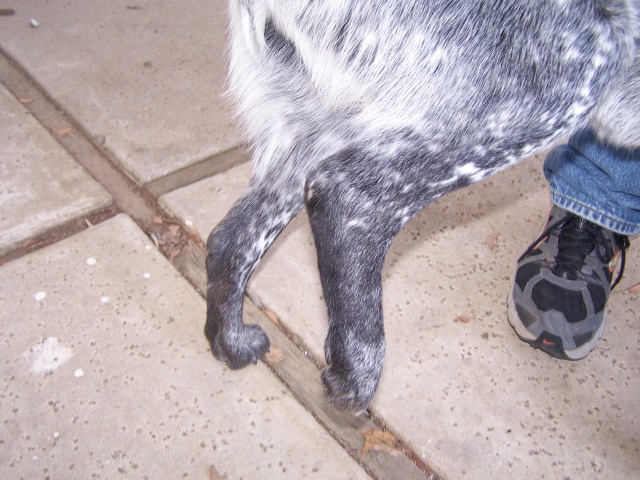 Dog broken toe or sprain?
Question
Dog Dog
Hello. I have a 10
Dog broken toe or sprain?
Question
Dog Dog
Hello. I have a 10
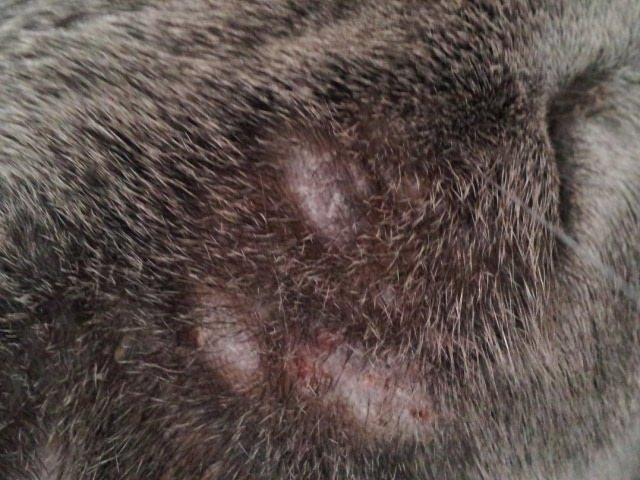 Cats play fighting
Question
Brunos scratches Brunos scratches
Cats play fighting
Question
Brunos scratches Brunos scratches
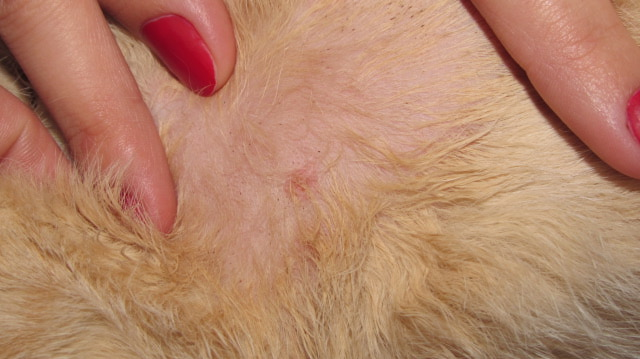 Cat skin condition
Question
Skin sore skin sore initially
My
Cat skin condition
Question
Skin sore skin sore initially
My
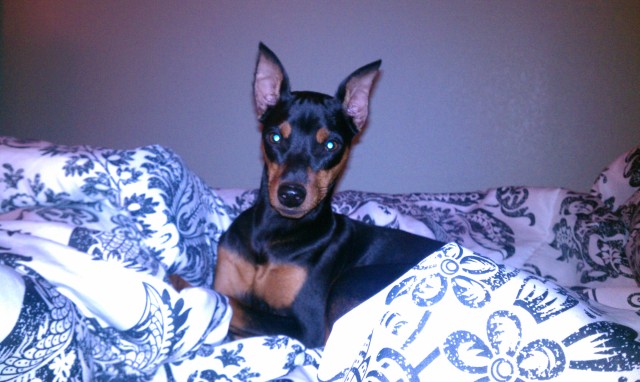 Chanel
Question
Chanel
I had a miniature pinscher of 8
Chanel
Question
Chanel
I had a miniature pinscher of 8
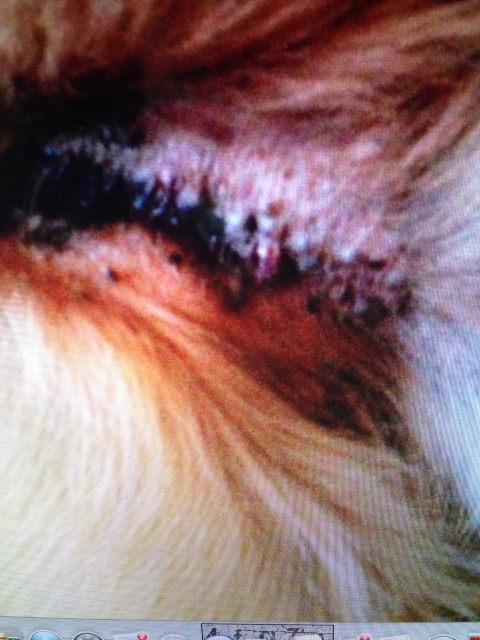 Dermatology question
Question
Gracie Gracie 2
Hi Dr. Louis,
I
Dermatology question
Question
Gracie Gracie 2
Hi Dr. Louis,
I